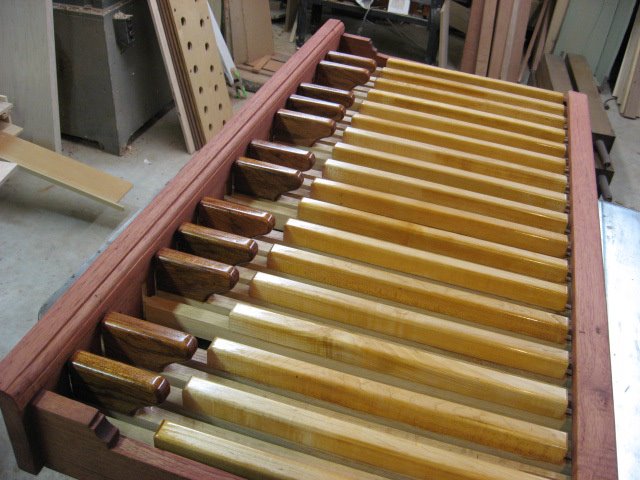











New Organs

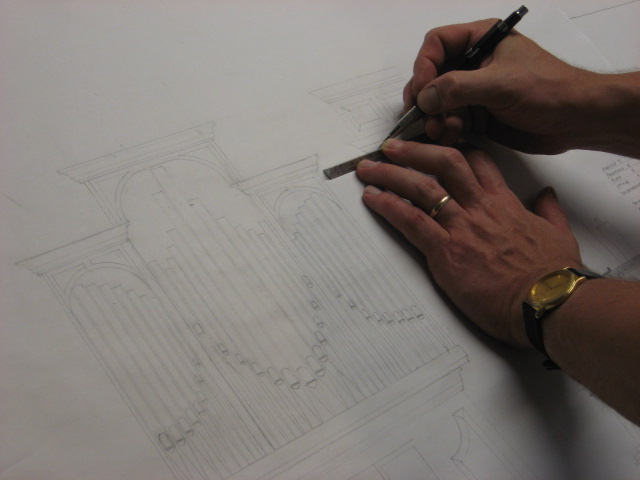


Although not actually a “new” organ, we have enabled an existing organ to be utilized in new ways. When a friend approached us needing a continuo organ for a large scale work with orchestra, it was decided that even the rental cost for such an instrument would be difficult to justify. The console of the organ at the church is recessed into the floor and would be behind the choir, and so the organist would be unable to see the conductor. Since the choir division has stops that function adequately for continuo work, we decided to provide this “continuo” keyboard for the organ proper. Made of Spanish Cedar, Its raised panel cabinetry fits visually into the chancel. The keyboard then plugs into the organ console, and operates four stops: Flute 8’, Hohl Flute 4’, Octavin 2’ and Cromorne 8’. This addition was a gift from a private donor.


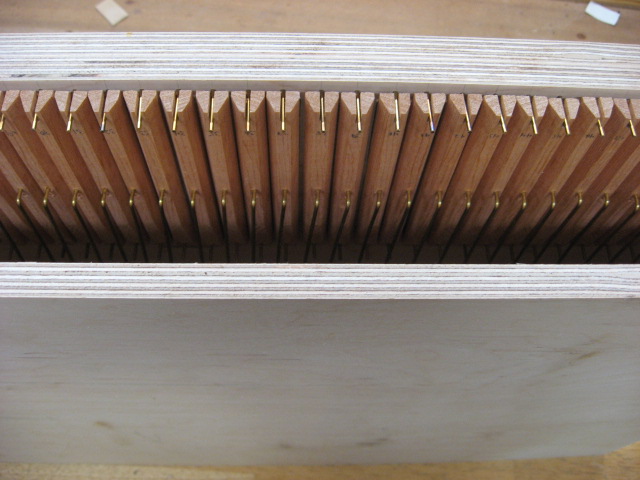
A view of the pallet valves inside the continuo organ windchest
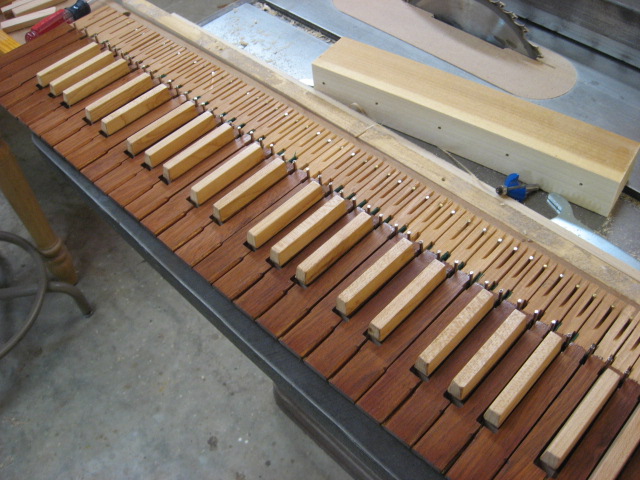
Keys chamfered and laquered, awaiting key cheeks
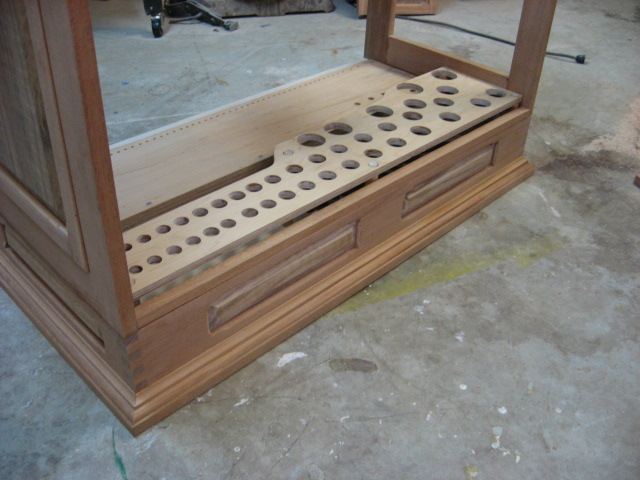
Windchest installed in the base of the organ case.
Our tonal style, although not based purely in any one period is clear, cohesive and with prompt speech. We choose scales, pipe material and mouth proportions with great care in order to build the best instrument for your space and for your needs.
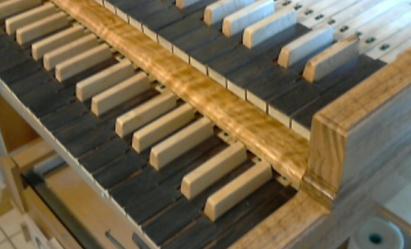
Case design for a requested proposal
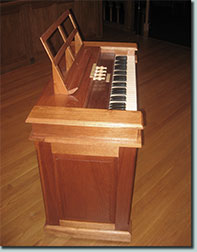
Our single 8' Continuo organ! C,D,E-f''', 52 notes. The casework is Mahogany, with inset raised panels and spiral turnings of figured Red Oak, giving the wood an almost marbled appearance. The organ transposes for either A=440, or A=415hz. At A=415, the low two pipes have to be re-tuned, and there is no low C. Overall dimensions are 20.5 inches deep, 35 inches tall, 36 inches wide.
The Keyboard is covered in Jatoba, with Maple accidentals. The inlaid diamond figure is made up of Jatoba and Walnut.
Keyboards for our II/4 practice organ.
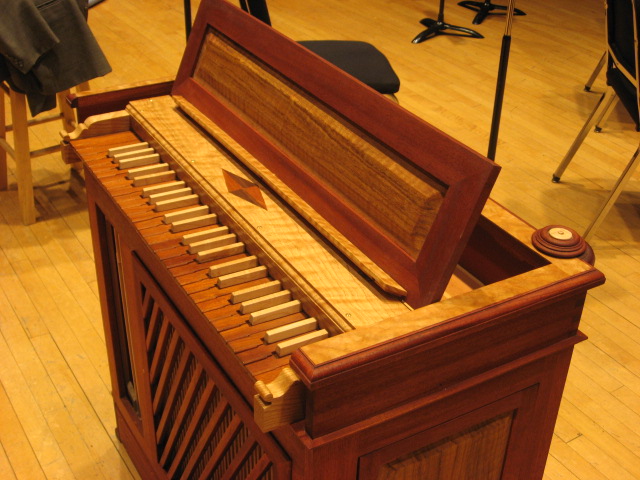
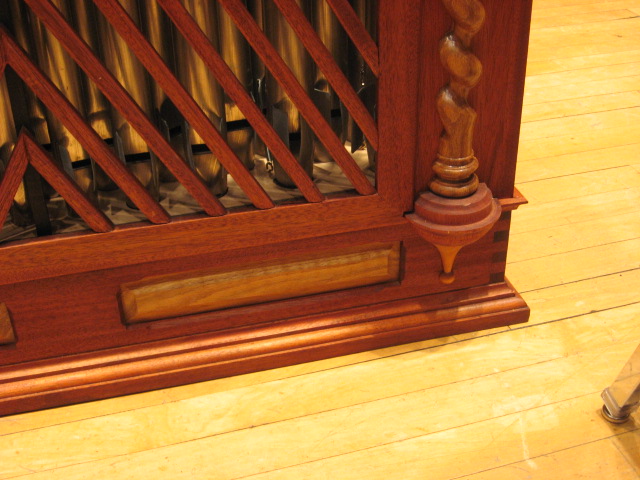


This table organ built for Dr. Joseph Flummerfelt, was inspired by the Ab Yberg Family organ (ca 1550) housed in Basel, Switzerland. The case design, key range, disposition, and scalings are all unique to this organ, and were chosen for very specific reasons. Only the key scale was actually borrowed from the original. Each detail, including the pipes and wood carvings, was executed by Chris, the owner of New England Organbuilders.
It was decided that the original key range of F to a’'’ (38 notes) should be extended to make possible the performance of music of later periods. The range of the organ is now 45 notes, C-c’’’ with a short octave in the bass, making the works of Sweelinck, Praetorius, etc. more practical. The stops are a 4’ Gedeckt of oak, and a 2’ Principal of 98% lead. Both utilize a variable scaling for practical and tonal reasons. It was featured on the cover of the June, 2008 issue of The Diapason Magazine.
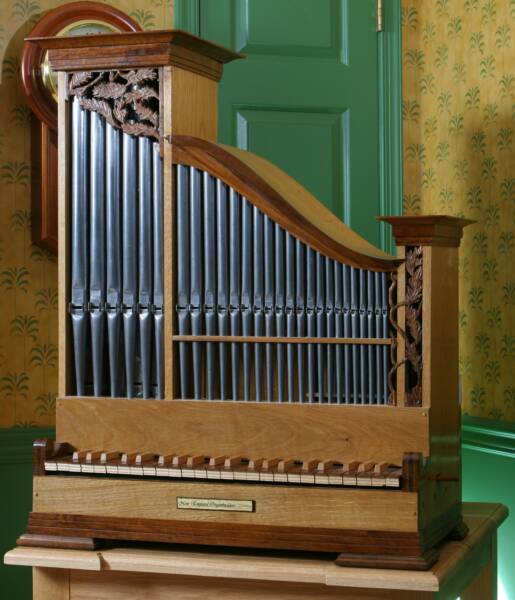
New practice organ in process.
Manual I (54 n)
8' Gedeckt
4'Spire flute
Manual II (54 n)
8' Quintadena
4' Spire flute (either manual I or II)
Pedal (30 n)
8' Viola da Gamba
